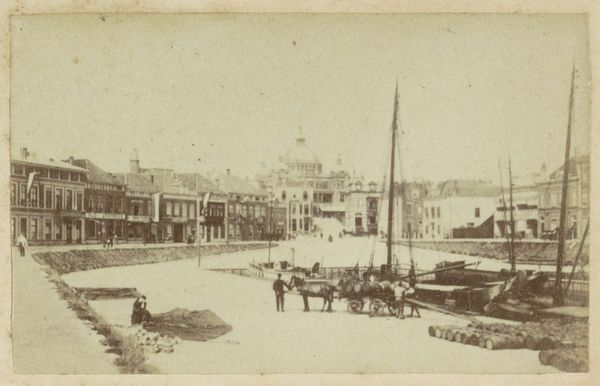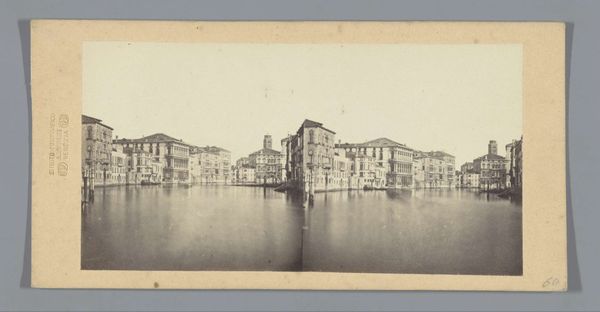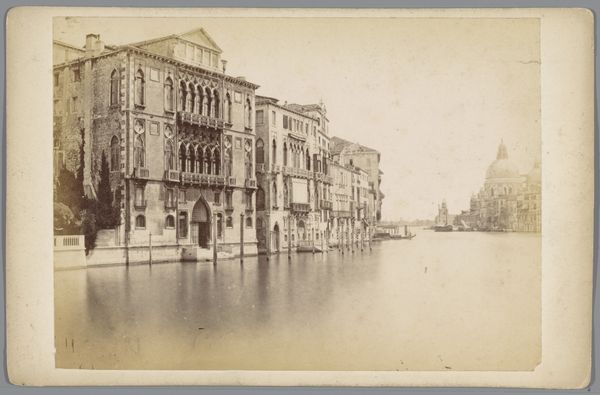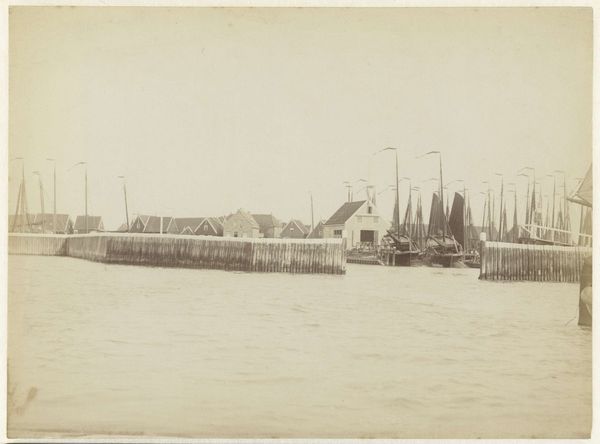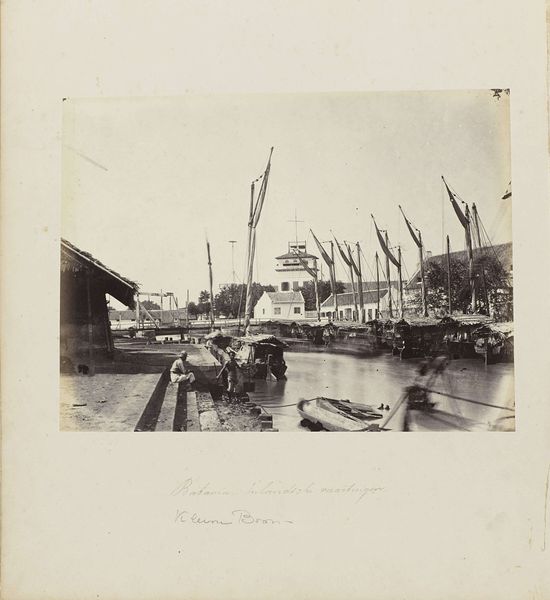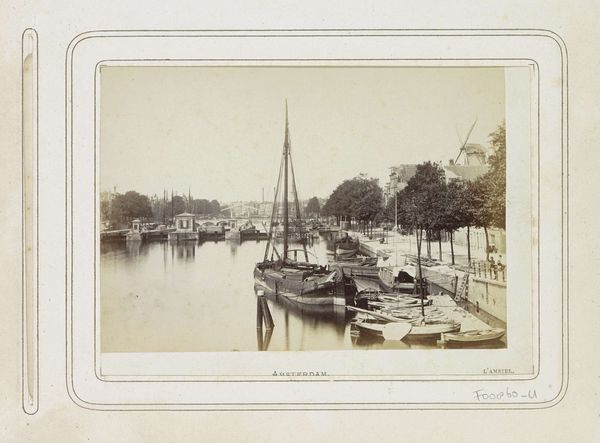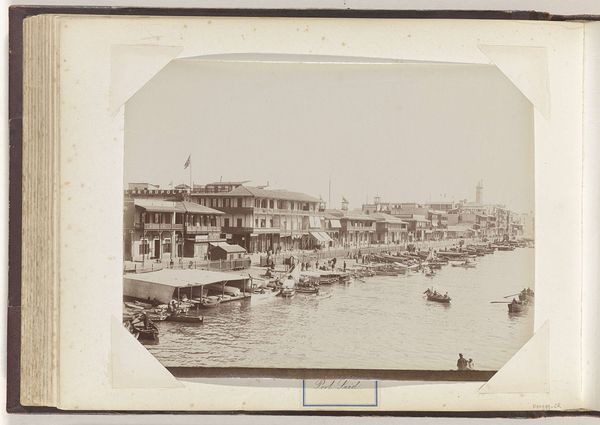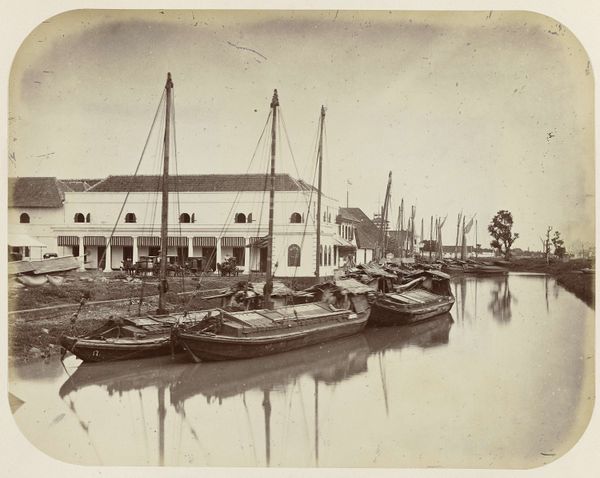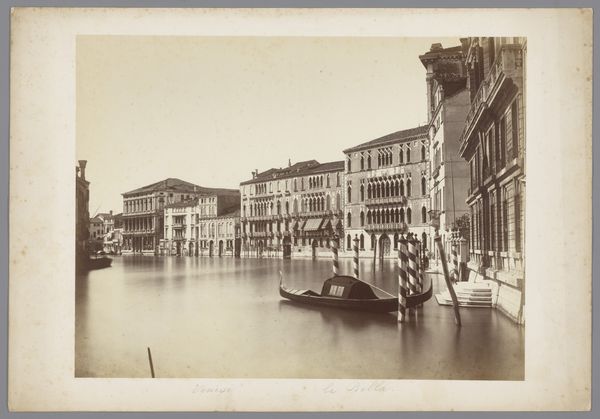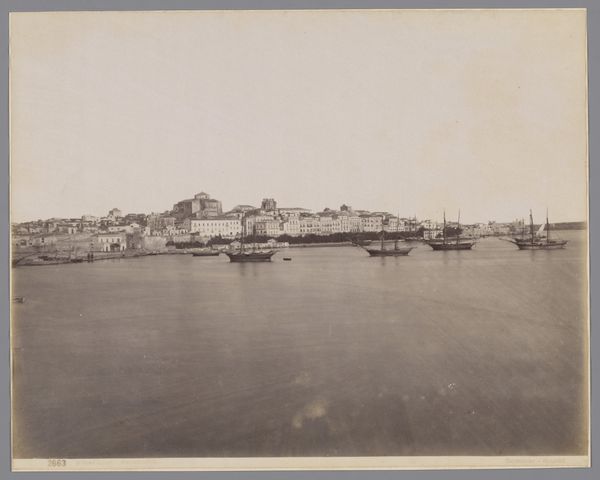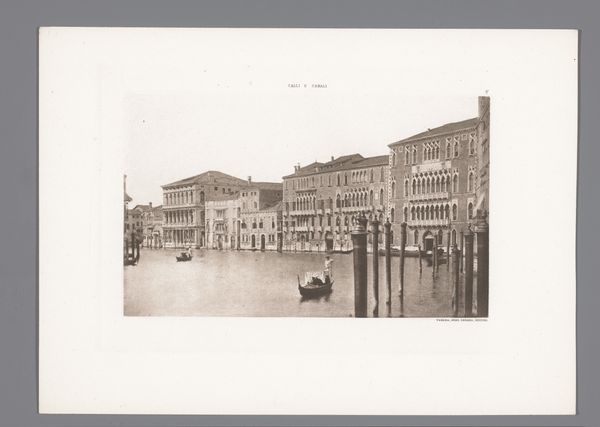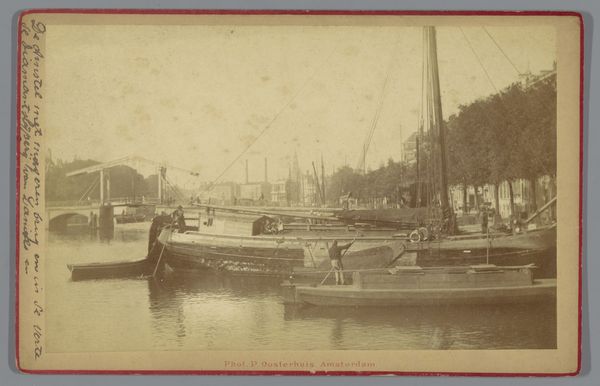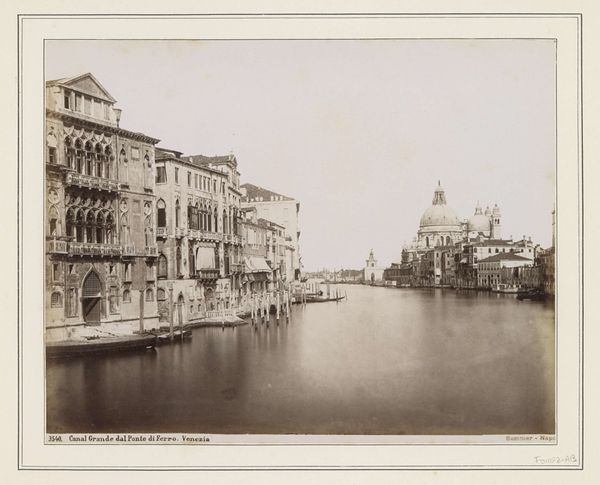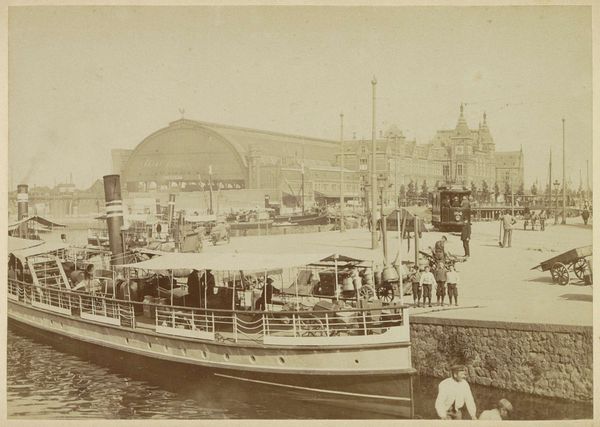
photography
#
landscape
#
photography
#
orientalism
#
cityscape
Dimensions: height 196 mm, width 254 mm
Copyright: Rijks Museum: Open Domain
Curator: Let's dive into this photograph, "Kade met schepen en een kruidenierswarenzaak in Tunis," taken sometime between 1880 and 1900. Editor: The sepia tones give it a very dreamy quality, and the composition, with the boats leading into the bustling scene, feels quite balanced. What do you see in this piece, especially considering its material and process? Curator: I am struck by how this photograph, as a commodity itself, documents other commercial activities in Tunis. We see boats, suggesting trade and movement of goods, and a grocer's shop, a point of local consumption. The photographic process, with its chemicals and paper, enabled the mass production and distribution of these "exotic" scenes to consumers back in Europe. Do you see how the image, beyond depicting a place, becomes a product of its time? Editor: Yes, it's like the photograph itself becomes a tool of trade, exporting a vision of Tunis to somewhere else. Are there any specific elements that point to a deeper social context? Curator: Consider the act of taking this picture. Someone had to transport the equipment, navigate the local social structures, and negotiate access to this scene. And, the composition is so consciously composed; it leads one to believe it was produced for a market hungry for these images, perpetuating a certain understanding—or misunderstanding—of Tunisian life and labor. What kind of narratives do you think such images reinforced? Editor: It definitely adds layers to the scene. It’s easy to forget the materiality and labor behind a seemingly straightforward landscape. This makes me think about how images shape our understanding of other cultures and economies, even today. Thanks! Curator: Indeed, understanding the material production and circulation of art like this gives us a sharper lens through which to view not just the past, but our own present-day engagement with images and commodities.
Comments
No comments
Be the first to comment and join the conversation on the ultimate creative platform.
